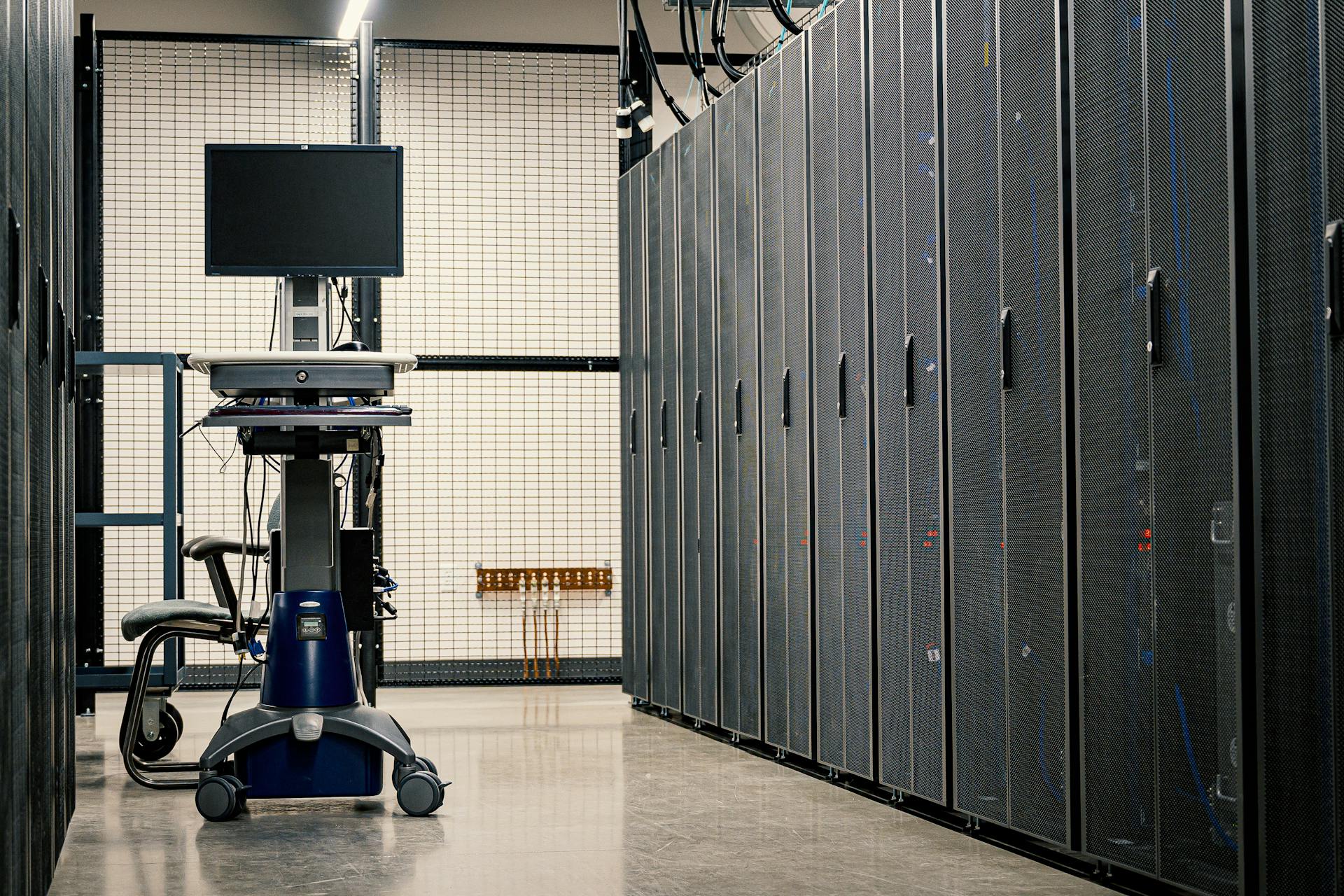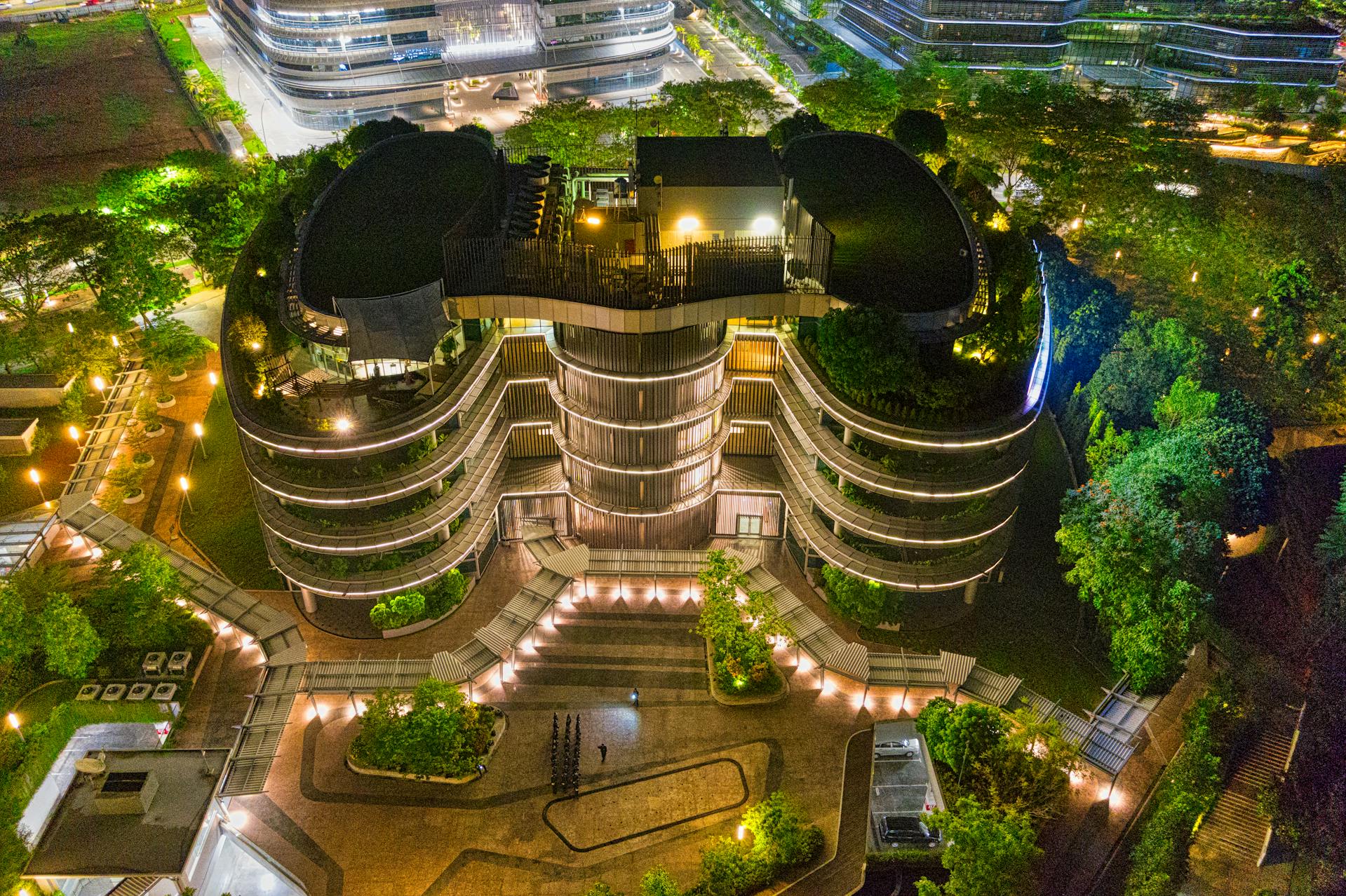In today’s hyper-connected world, where everything from social media to cloud computing and AI relies on seamless digital infrastructure, the demand for data storage and processing is soaring. But behind every email sent, video streamed, or app used lies an invisible force consuming vast amounts of energy: data centers. These colossal facilities, which house the servers that power our digital lives, are rapidly becoming one of the largest contributors to global energy consumption—and their environmental impact is only growing.
As our reliance on digital technologies deepens, so does the energy demand of the infrastructure that supports them. Data centers—massive hubs where data is stored, processed, and transmitted—are at the heart of this digital ecosystem. They enable everything from online banking to streaming platforms, playing a pivotal role in the digital economy. However, their energy-intensive nature, driven by the need for continuous computing power and cooling systems, has raised serious concerns about their environmental footprint. In fact, the energy consumption of these facilities is so significant that they now account for a substantial portion of global electricity use. With climate change becoming an increasingly urgent issue, it’s clear that data centers must prioritize energy efficiency to minimize their carbon footprint. This article explores how the tech industry can harness innovative strategies and technologies to create more sustainable data centers, ensuring that the digital world we depend on doesn’t come at the cost of the planet.
The Environmental Impact of Data Centers
Data centers are responsible for a significant share of global energy consumption. According to a 2020 report from the International Energy Agency (IEA), data centers worldwide account for approximately 1% of global electricity use. As digital infrastructure continues to expand, this figure is expected to rise sharply. The energy-intensive nature of data center operations stems primarily from two factors: the power required to run servers and the energy needed to cool them. Servers, which process vast amounts of data, are essential to the function of any data center but generate substantial heat. Without proper cooling systems, these servers could easily overheat, causing hardware failures and system outages. As a result, cooling infrastructure—ranging from air conditioning units to advanced refrigeration systems—often consumes as much energy, if not more, than the servers themselves.
The carbon footprint of data centers extends beyond just energy consumption. The increasing reliance on cloud storage, artificial intelligence, and real-time data processing adds layers to this footprint. Cloud services, which enable consumers and businesses to store and access vast amounts of data remotely, have experienced exponential growth, further amplifying energy demands. Likewise, the rise of AI technologies—particularly machine learning algorithms, which require substantial computing power for training and operation—has placed even more pressure on data centers. The combination of growing data demands, more energy-intensive technologies, and the need for constant operations raises alarms about the environmental impact of this digital backbone.
Key Strategies for Improving Energy Efficiency in Data Centers
One of the most effective ways to mitigate the environmental impact of data centers is by investing in energy-efficient hardware. Modern, low-power servers and storage solutions are designed to deliver the same processing power while consuming significantly less energy. These energy-efficient components can reduce both operational costs and carbon emissions, providing immediate benefits to both companies and the environment. Networking equipment, too, has seen similar improvements, with advanced switches and routers optimized for lower energy consumption.
In addition to upgrading hardware, optimizing the physical design of data centers is another crucial strategy. Modular and scalable data center designs allow for more efficient resource allocation, ensuring that energy is only consumed where and when needed. Additionally, incorporating advanced cooling systems, such as hot aisle/cold aisle containment or liquid cooling, can substantially reduce the amount of energy required to maintain optimal temperatures. Energy-efficient lighting solutions, like LED systems, also contribute to reducing a data center’s total energy consumption.
Server virtualization and cloud computing have proven to be powerful strategies for improving efficiency. Virtualization allows data centers to host multiple virtual servers on a single physical machine, thereby reducing the number of physical servers required. This helps optimize workloads and reduces the energy spent on both server operation and cooling. Cloud computing also plays a role in optimizing resource usage by offering on-demand scalability, which helps avoid the over-provisioning of server capacity that can lead to energy waste. Furthermore, transitioning to renewable energy sources—such as solar, wind, and hydroelectric power—is a critical step in powering data centers sustainably. By tapping into clean, renewable energy, data centers can significantly reduce their carbon footprint and contribute to global decarbonization goals.
Innovative Technologies Shaping Data Center Sustainability
As data centers become more complex, innovative technologies are emerging to further enhance sustainability. Artificial intelligence (AI) is playing a pivotal role in energy management. AI-powered systems can predict energy demand patterns, optimize cooling and power systems, and even adjust workloads in real time to reduce energy consumption. By analyzing vast amounts of operational data, AI can identify inefficiencies and recommend adjustments to improve overall energy use. This level of automation and optimization is crucial for meeting sustainability targets while maintaining peak performance.
Advanced cooling technologies are also driving energy efficiency improvements. Liquid cooling, for example, is far more efficient than traditional air conditioning systems, particularly in high-density data centers. Liquid-cooled systems transfer heat directly from the equipment to the cooling medium, which can be more energy-efficient and allow for higher operating temperatures. Free air cooling, which uses outside air to cool servers in cooler climates, and heat recovery systems, which capture and reuse waste heat, are also gaining traction as sustainable solutions.
Edge computing is another innovative approach that helps alleviate the environmental strain on central data centers. By distributing data processing closer to the source of data generation—whether at the edge of a network or in smaller, localized data centers—edge computing reduces the need for long-distance data transmission and lowers energy consumption. This decentralized model not only improves latency but also helps reduce the carbon footprint associated with data storage and processing.
Industry Leaders and Best Practices
Several major companies have already embraced energy efficiency and sustainability as core principles of their data center operations. Google, for example, has committed to running all of its global data centers on renewable energy, a goal it achieved in 2017. The company has also pioneered the development of AI-driven energy optimization systems, which have helped reduce energy consumption in its data centers by more than 30%. Similarly, Microsoft has made significant strides in reducing its environmental impact by powering its data centers with 100% renewable energy and pledging to become carbon-negative by 2030. Amazon, too, has committed to powering its data centers with renewable energy, with a goal of reaching 100% renewable energy by 2025.
Key industry initiatives such as Power Usage Effectiveness (PUE) have helped establish benchmarks for energy efficiency. PUE measures the ratio of total building energy usage to the energy used by the equipment itself, providing a standard metric for assessing data center efficiency. Collaborative efforts between corporations, governments, and environmental organizations are also instrumental in advancing sustainability in the sector. These partnerships are crucial for developing industry-wide standards, sharing best practices, and driving the innovation necessary to reduce the digital carbon footprint.
Challenges and Barriers
Despite the promising strategies and technologies, there are several challenges to achieving widespread energy efficiency in data centers. One major barrier is the high upfront cost of implementing energy-efficient technologies. While the long-term benefits—such as reduced operational costs and environmental impact—are clear, the initial investment required to retrofit existing data centers or build new, sustainable facilities can be prohibitive, especially for smaller companies.
Another challenge lies in the technical and logistical complexities of retrofitting legacy data centers. Older facilities may not be equipped with the infrastructure required to accommodate modern, energy-efficient technologies, and upgrading them can be a time-consuming and costly process. Additionally, the lack of standardized metrics for energy efficiency makes it difficult for companies to accurately assess and compare the performance of different data centers or technologies.
The Future of Sustainable Data Centers
Looking ahead, the future of sustainable data centers is promising. As energy efficiency technologies continue to evolve, it’s likely that the sector will see significant improvements in both energy use and carbon emissions reductions. Predictions suggest that by 2030, data centers could reduce their energy consumption by as much as 50% through the adoption of more efficient technologies and renewable energy sources. Government regulations and incentives, such as carbon tax credits and renewable energy subsidies, will play a key role in encouraging the industry to adopt sustainable practices and achieve ambitious climate goals.
Continued innovation will be essential in meeting the growing energy demands of the digital economy while minimizing environmental impact. As data centers evolve to meet these challenges, they will need to remain agile, leveraging new technologies, optimizing operations, and collaborating across sectors to drive sustainability forward.
Conclusion
The growing energy demands of digital infrastructure present a significant challenge for data centers, but they also offer an opportunity for innovation and leadership in sustainability. By prioritizing energy-efficient hardware, optimizing designs, and adopting renewable energy, the tech industry can make a substantial impact in reducing the carbon footprint of data centers. As the sector continues to embrace cutting-edge technologies like AI, liquid cooling, and edge computing, the future of data center sustainability looks brighter than ever. The tech industry must now take action, not only for the future of our digital lives but for the health of our planet.
Frequently Asked Questions (FAQ)
1. Why are data centers such a significant contributor to global energy consumption?
Data centers require vast amounts of energy to power servers and storage devices and to cool the infrastructure. With the increasing demand for digital services like cloud computing, AI, and data storage, these energy needs continue to grow. Cooling systems, which are essential for preventing overheating of servers, often consume as much energy as the servers themselves.
2. How can data centers reduce their carbon footprint?
Data centers can reduce their carbon footprint by implementing energy-efficient hardware, optimizing their physical designs, utilizing renewable energy sources, and leveraging technologies like AI for energy management. Switching to low-power servers and adopting advanced cooling technologies, such as liquid cooling or free air cooling, can also significantly reduce energy consumption.
3. What is Power Usage Effectiveness (PUE)?
Power Usage Effectiveness (PUE) is a key metric used to measure the energy efficiency of data centers. It compares the total energy consumed by a data center (including all cooling and infrastructure) to the energy used by its IT equipment alone. A lower PUE indicates better energy efficiency. The goal is for data centers to achieve a PUE of 1.0, meaning all energy used is dedicated solely to IT operations.
4. How do renewable energy sources benefit data centers?
Renewable energy sources, such as solar, wind, and hydroelectric power, can significantly reduce a data center’s carbon footprint by powering operations without relying on fossil fuels. Many leading tech companies have made commitments to power their data centers entirely with renewable energy, reducing both operational costs and environmental impact.
5. What role does artificial intelligence (AI) play in energy management for data centers?
AI can help optimize energy consumption in data centers by analyzing vast amounts of operational data in real time. AI systems can predict energy demand, adjust workloads, and manage cooling systems more efficiently. By identifying inefficiencies and making real-time adjustments, AI can significantly reduce energy waste and improve overall sustainability.
6. What is edge computing, and how does it help reduce the environmental impact of data centers?
Edge computing involves processing data closer to the source of generation, such as IoT devices or local data centers, rather than sending it to a centralized facility. This reduces the need for long-distance data transmission and lowers the energy consumption associated with central data centers. By distributing workloads, edge computing can help reduce the overall carbon footprint of the digital infrastructure.
7. What are the biggest challenges to making data centers more energy-efficient?
The main challenges include the high upfront costs of implementing energy-efficient technologies, the technical complexities of retrofitting existing data centers, and the lack of standardized metrics for assessing energy efficiency. Additionally, smaller companies may face financial barriers in adopting sustainable practices.
8. Can smaller data centers also benefit from energy-efficient technologies?
Yes, smaller data centers can also benefit from energy-efficient technologies. Solutions like virtualization, cloud computing, and advanced cooling systems can be implemented at any scale. While larger data centers may have more resources to invest in cutting-edge technologies, smaller operations can still achieve significant energy savings through strategic upgrades and optimization.
9. What is the future of sustainable data centers?
The future of sustainable data centers is promising, with innovations in energy efficiency, renewable energy adoption, and cooling technologies expected to drive significant improvements. As AI, edge computing, and other technologies continue to evolve, data centers will become more energy-efficient, further reducing their carbon footprints. Government regulations, industry initiatives, and consumer demand for sustainability will continue to push the sector toward more eco-friendly practices.
10. How can consumers help reduce the environmental impact of data centers?
Consumers can play a role by choosing companies and services that prioritize sustainability. Many tech giants, such as Google, Microsoft, and Amazon, have made significant strides in powering their data centers with renewable energy. By supporting businesses that are committed to reducing their carbon footprints, consumers help incentivize broader industry-wide changes. Additionally, being mindful of data usage, such as reducing unnecessary cloud storage or optimizing device energy settings, can also contribute to overall sustainability.


